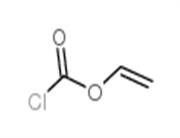Product Name: Hexetidine
Synonyms: 1,3-bis(2-ethylhexyl)hexahydro-5-methyl-5-pyrimidinamin;1,3-bis(2-ethylhexyl)hexahydro-5-methyl-5-Pyrimidinamine;hexetidine,5-amino-1,3-bis(2-ethylhexyl)hexahydro-5-methylpyrimidine;hexetidine,mixtureofstereoisomers;5-AMINO-1,3-BIS(2-ETHYLHEXYL)HEXAHYDRO-5-METHYLPYRIMIDINE;HEXETIDINE;LABOTEST-BB LT00134693;5-Amino-1,3-bis(2-ethylhexyl)hexahydro-5-methylpyrimidine, mix of diastereomers
CAS: 141-94-6
MF: C21H45N3
MW: 339.6
EINECS: 205-513-5
Product Categories: STERISIL
Mol File: 141-94-6.mol
Hexetidine Structure
Hexetidine Chemical Properties
Melting point 25°C
Boiling point 160°C 0,4mm
density 0.889 g/mL at 25 °C(lit.)
refractive index 1.4649
Fp 70°C
solubility acetone: soluble(lit.)
form neat
pka 8.3(at 25℃)
Water Solubility Not miscible or difficult to mix in water.
Merck 14,4703
BRN 161071
InChIKey DTOUUUZOYKYHEP-UHFFFAOYSA-N
CAS DataBase Reference 141-94-6(CAS DataBase Reference)
EPA Substance Registry System 5-Pyrimidinamine, 1,3-bis(2-ethylhexyl)hexahydro-5-methyl- (141-94-6)
Safety Information
Hazard Codes Xi
Risk Statements 36/38-36/37/38
Safety Statements 26-36
WGK Germany 3
Hazard Note Irritant
TSCA Yes
MSDS Information
Provider Language
ALFA English
Hexetidine Usage And Synthesis
Chemical Properties Liquid.Soluble in methanol, benzene, and petroleum ether; insoluble in water.
Chemical Properties Hexetidine is a colorless or faint yellow-colored oily liquid with a characteristic amine odor.
Uses Fungicide, bactericide, algicide, antistatic agent for synthetics, insect repellent, medicine (antifungal agent).
Production Methods Hexetidine is prepared by hydrogenation under pressure of 1,3- bis(2-ethylhexyl)-5-methyl-4-nitrohexahydropyriminine at 100°C using Raney nickel as a catalyst.
Hazard Combustible.
Pharmaceutical Applications Hexetidine is used as an antimicrobial preservative in cosmetics and nonparenteral pharmaceutical formulations. Therapeutically, hexetidine is mainly used as a 0.1% w/v solution in mouthwash formulations for the prevention and treatment of minor local infections, gingivitis, and mouth ulcers.
Safety Hexetidine is mainly used in mouthwashes as a bactericidal and fungicidal antiseptic. It is also used as an antimicrobial preservative and is generally regarded as a relatively nontoxic and nonirritant material at concentrations up to 0.1% w/v. Allergic contact dermatitis and altered olfactory and taste perception have occasionally been reported. Hexetidine is toxic when administered intravenously.
Solutions of hexetidine in oil at concentrations of 5–10% w/v cause strong primary irritations without sensitization in humans. Long-term toxicological studies of up to 0.1% w/w of hexetidine in food for 1 year do not show any toxic effect. Fetotoxicity, embryotoxicity, and teratogenicity studies in rats of doses up to 50 mg/kg/day exhibit no sign of toxicity.
LD100 (cat, IV): 5–20 mg/kg
LD50 (dog, oral): 1.60 g/kg
LD50 (mouse, IP): 0.142 g/kg
LD50 (mouse, oral): 1.52 g/kg
LD50 (rat, oral): 0.61–1.43 g/kg
storage Hexetidine is stable and should be stored in a well-closed container in a cool, dry place. Brass and copper equipment should not be used for the handling or storage of hexetidine.
Incompatibilities Hexetidine is incompatible with strong oxidizing agents. Salts are formed with mineral and organic acids; strong acids cause opening of the hexahydropyrimidine ring, releasing formaldehyde.
Regulatory Status Included in nonparenteral formulations licensed in Europe.

 China
China










